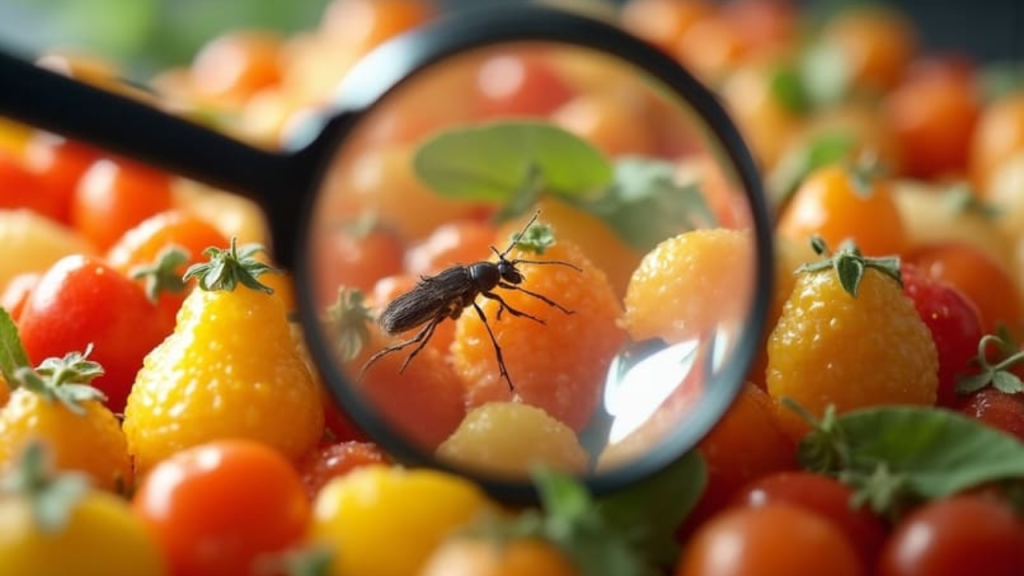Many Wisconsinites enjoy classic pantry staples like peanut butter, pasta, and chocolate. But what if you learned that some of your favorite foods contain more than just ingredients listed on the label—like insects?
Yes, it’s true. Under guidelines set by the U.S. Food and Drug Administration (FDA), a small amount of insect fragments is legally permitted in a wide range of foods. This is because completely eliminating bugs during mass food production is practically impossible. But don’t worry—these small amounts are considered safe to consume.
Here are 13 common foods consumed in Wisconsin that often come with a crunchy little secret:
1. Peanut Butter
A staple in many Wisconsin homes, peanut butter can legally contain up to 50 insect fragments per 100 grams, according to the FDA’s Defect Levels Handbook. That’s right—your PB&J might come with a bit of extra “protein.
2. Chocolate
That delicious chocolate bar might include up to 60 insect fragments per 100 grams. The culprits? Cocoa beans can be hard to clean completely during processing.
3. Tomato Sauce
Whether it’s pizza night or pasta dinner, tomato sauce is a favorite. The FDA allows up to 15 fruit fly eggs per 100 grams—so some of your tomato base might be a little more “organic” than you expected.

4. Canned Mushrooms
This pantry favorite can contain up to 19 maggots and 74 mites in a 3.5-ounce can. While it sounds alarming, these trace elements are considered harmless and nearly unavoidable during harvest and canning.
5. Pasta
From macaroni to spaghetti, dry pasta is prone to infestation during storage. The FDA allows up to 225 insect fragments per 225 grams.
6. Raisins
Even your seemingly healthy raisins aren’t safe. They can legally include up to 35 fruit fly eggs and 10 whole insects per cup.
7. Frozen Spinach
This popular green may include up to 50 aphids, thrips, or mites per 100 grams. These tiny bugs cling to the leaves during farming and are hard to remove even after washing.
8. Broccoli
Yes, the veggie your mom told you to eat more of might be hiding bugs too. Broccoli is known to carry entire insect fragments—and sometimes whole bugs—within its florets.
9. Canned Corn
Corn in a can might be colorful and sweet, but it’s allowed to contain two insect larvae per 100 grams. These larvae typically get in during the growing and processing stages.
10. Coffee Beans
That morning brew may be giving you more than just caffeine. Up to 10% of coffee beans can be infested by insects, especially if not stored properly before roasting.
11. Wheat Flour
Your baked goods are not immune either. Wheat flour can contain up to 75 insect fragments per 50 grams, most of which come from the milling process.
12. Curry Powder
Popular in Wisconsin’s multicultural kitchens, curry powder can include up to 100 insect fragments per 100 grams. These get in during the drying and grinding of spices.
13. Asparagus
Even this springtime favorite isn’t spared. The FDA allows more than 40 thrips (tiny flying insects) per 100 grams.
Why Are Insects in Our Food?
It might sound gross, but according to the U.S. Department of Agriculture (USDA), the inclusion of insect fragments is a natural result of large-scale food production. Farmers and food processors cannot completely eliminate every bug, especially in organic and minimally processed items.
Embracing the Bug Life
Interestingly, Wisconsin isn’t just passively tolerating insects in food—some locals are embracing entomophagy, or the practice of eating insects. At the Wisconsin State Fair, you’ll find vendors offering dishes like cricket tacos and earthworm jerky. These bug-based treats are marketed for their sustainability and high protein content.
If you’re feeling squeamish, know this: most Americans consume about one to two pounds of insects unintentionally each year. While that may be unsettling, it’s also a testament to how our food system realistically functions.


